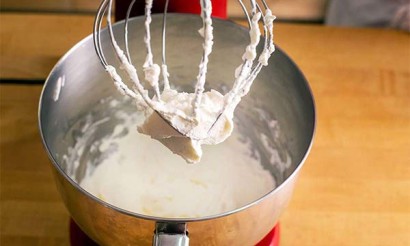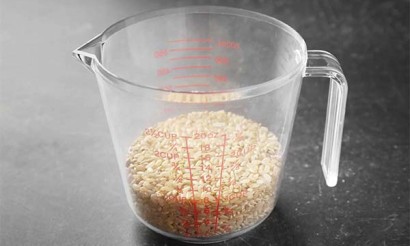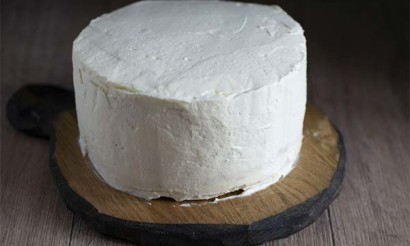How to defrost fish quickly and correctly
- Can I fry frozen fish without defrosting it?
- Can I boil frozen fish without defrosting?
- How to defrost fish fast and correctly
- Can I defrost fish?
- In water
- In the microwave
- In the oven
- Defrost fish in the open air
- Can I freeze defrosted fish
- How long does it take to defrost fish
- How long does a defrosted fish keep in the refrigerator?
- How not to defrost fish
It is easier and healthier to buy fresh chilled or live fish, not frozen fish, which then have to defrost. But this is not always and not everyone is available - sales of a number of types of live fish are often seasonal, and chilled fish is almost never on the shelves of small towns, far from regional capitals. So we have to choose from what is on sale. Often this "something" looks more like a log or a stone - the carcass is so densely covered with a layer of ice. So the skill of the hostess comes to the fore: can she cook a tasty dish for her family out of this block of ice.
To avoid getting in a jam, it is necessary to think at the store counter and calculate the necessary size of the carcass. It is one thing if you plan a celebration with guests, and another thing if you plan an ordinary family dinner for three or four people. In the first case, you can take a larger fish, in the second case - either a small fish or steaks, because you can not cut off the excess from a large carcass while it is frozen. It is impossible to freeze thawed fish again.
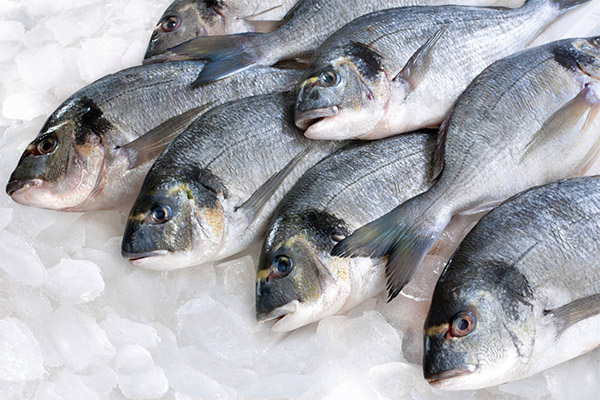
Proper cooking begins with proper defrosting. And the most appropriate way to do this is a gradual, slow defrosting. It is better if it is done in the refrigerator, where the negative effects of temperature on the delicate fish meat will be minimized.
But when there is no time, you can use faster methods - for example, in water or using a microwave, oven or steam cooker. If you defrost according to the rules recommended by specialists in cooking or fish processing, the result will not be long: the fish will be quite edible, moderately juicy and tender.
Can I fry frozen fish without defrosting
Anything happens in life, including this: it's time to cook dinner, and then it turns out that the hostess forgot to put the fish out of the freezer to thaw. What to do? Don't panic! You have to get the product and try to quickly make it so that it can be put on the griddle. And only steaks or portions of fillets are good for this, since you can't cut a whole frozen carcass.
One should turn the fish around and hold it under a stream of cool (not cold!) water to melt the ice crust from the surface. The pieces can be rinsed and, if necessary, cleaned and gutted. Then you can dry them with a paper towel to get as much moisture out as possible.
Frozen fish should be sent to a very hot pan. It is enough to roll it in flour or breadcrumbs and put it in hot oil. It is important to quickly form a thick crust. As soon as the underside is well browned, quickly flip to the other side, salt and cover. The lid is obligatory, because you need the ice lump inside the piece not only to melt, but also the flesh has time to finish cooking. This will take almost twice as much time as cooking defrosted fish.
In addition, you will not have to count on a crispy crust: the ice will turn into water, and the fish will not fry, but languish in the boiling liquid. By and large, you will get not fried, but stewed fish. And because of the extended cooking time the tender flesh will almost certainly fall apart, the nutrients in the finished product will remain less than it could. But in an emergency situation, if there is nothing else to feed the family, you have to be content with this option. However, you should not make this method of cooking a habit.
With the least loss in quality, fish such as silver hake, saffron cod, mackerel or mackerel can be put on the griddle in an unrefrigerated state. They deform less than others and keep the beneficial substances from breaking down better.
Can fish be boiled without defrosting
With the boiling of unfrozen fish, the conditions are similar: if the situation is stalemated, you have to boil, although it is undesirable. Cooked frozen fish will no longer be as tender and tasty as it would be if it were cooked defrosted.
You should hold the piece of fish under running water to thaw a little ice on the surface, and scrape with a knife to remove the remnants of scales and foreign particles adhering to them: dirt, fragments of packaging.
Lowering such fish should be done in boiling water: the defrosting process goes faster and it boils faster. However, the cooking time will have to increase twofold, so that the pieces are well cooked to the middle. And if soup is planned from fish, you need to prepare that the broth will not turn out light and transparent - rather, it will be whitish and cloudy.
How to defrost fish properly and quickly
Which way to defrost is considered the most correct, depends on several factors: such as the type of fish, the size of the carcass and the method of freezing (carcass, steak or fillet).
Thus, not very large hake or pollack carcasses up to 1.5 kilograms are best defrosted in cold water. The same fish, but larger - more than 1.5 kg, as well as copies of sturgeon species, nototenia, sea bass, bighead and catfish better defrost in the air at room temperature. The same conditions will work for fillets, briquettes, blocks, minced meat, steaks and gutted fish of these same varieties. This method is fast enough, it can take from one and a half to three hours.
For salted fish - such as pollock, salmon, pike, carp, pikeperch and trout - defrosting in salt water works well. And you should not keep it in water until it is completely cooked: after an hour in a bowl with liquid, the fish should be taken out and left at room temperature to finally thaw. Salt solution is prepared at the rate of 25 grams of salt (it is better to take a large rock salt) per 1.2 liters of water.
Smoked fish can be held for five hours in the refrigerator, and then take it out and leave at room temperature until ready.
Salt for defrosting fish is acceptable to use not only in the form of a solution, but also in dry form. If you remember how janitors scatter salt on the asphalt in winter to melt the ice on it, it is clear: salt is what is needed in the struggle to defrost the product. Each frozen fish is salted on both sides and waited for it to thaw.
But the best way for absolutely all kinds of fish - defrosting in the refrigerator, the temperature there should be +5 degrees. In this way it is possible to achieve a slow thawing without causing any damage to the quality of the product. Before putting it in the refrigerator, it is necessary to pierce in several places the tight polyethylene packaging. If the fish is unpackaged, you should wrap it in cling film. Put a plate or a bowl with a carcass on the bottom shelf for about 7-9 hours. When the fish thaws, remove the wrapping or film, pour out the liquid and dry the carcass with paper towels or a towel.
If you need to defrost the fish as quickly as possible, you usually use electric kitchen appliances, such as a microwave. But some particularly creative hostesses use quite exotic methods for this, it would seem - for example, thaw the carcass with a hair dryer. And, strange as it may seem, this funny method works.
But first the fish taken out of the freezer for half an hour should be placed in the refrigerator - so the taste is better preserved. Then wrap it in cling film, put it in a plastic bag and turn on the dryer on the cold blast mode, without starting the heating. Direct the cold air jet at medium speed directly into the bag, keeping the appliance at a distance of about 20 cm from the fish. The food film will protect the surface of the carcass from becoming weathered and dry. To speed up the process, you can run the air jet over the bag several times along the whole body of the fish. If the dryer is already hot, you need to give it a break for a few minutes. This entire defrosting process takes no more than 40-45 minutes.
Defrosted with the dryer fish need to rinse, blot the moisture with a paper towel and immediately proceed to its further cooking.
There are quite a few housewives, successfully defrosting fish in a multicooker, for which they set the program of minimum heating for 15-20 minutes. They also put the product on the top tray of the steamer for the same time. However, this method is suitable only if the fish is then planned to be boiled, but not fried or salted. Although it is possible right in the steamer or multicooker, immediately after defrosting, to bring it to readiness.
To do this, the frozen carcass should be slightly held under running water to thaw it out, scrape off possible dirt with a knife and rinse again. Then put it on the grate of the steamer to thaw, and after 20 minutes put it into cooking mode, increasing the temperature. Cooked in this way the dish may seem empty because of not very pronounced taste, so the fish should not only be salted, but also sprinkled with lemon juice and spices. In 5 minutes the whole house will be filled with a surprisingly appetizing smell.
Very similar in principle to the steamer is another method of defrosting, when you need to set a colander on a saucepan with boiling water, in which to put a bowl with fish fillets. With a slight simmer, keep the product in the bowl, turning the pieces from time to time so that they defrost evenly. Usually after about 12-15 minutes the fire under the pan can be turned off, because the fish has thawed.
Can fish be defrosted
In water
To defrost the product in water, you need to put it in plastic bags: first in one, which is firmly tied, then in the second - and again tie and so on. It is important to pack the fish carcass so that the liquid cannot seep into the cocoon from the bags. If the fish is in the water unprotected, it will absorb the liquid and become watery, unpalatable.
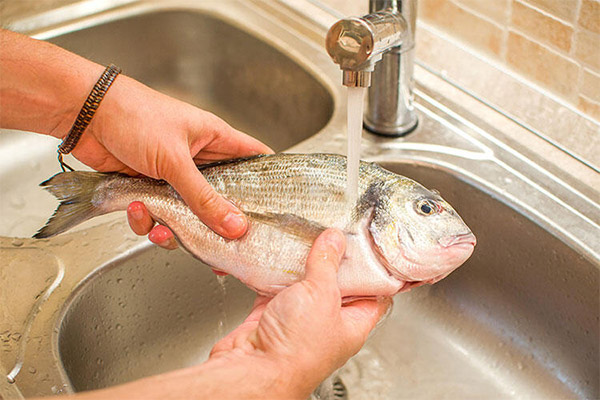
Next, there are two ways to proceed.
The first way is to defrost under running water until the product is completely thawed, this will take about an hour and a half. Water must be necessarily cold, because warm or hot flesh will become loose, flabby and unpalatable, and useful substances and vitamins will be destroyed.
A lot of water will leak in an hour and a half, which will be ruinous for those who have water meters. They are better suited to the second method: pour cold water into a basin and put a bag of fish in it. Every half an hour, the water should be poured out and replaced until the fish carcass is frozen. For fish weighing about one kilogram it takes a couple of hours, larger fish - up to two kilograms - will be ready in three hours.
In the same way you can thaw not only the whole carcass, but also minced fish and fillets. Professional chefs and nutritionists believe that defrosting fish in water is the safest and fastest way to preserve nutrients and vitamins, and not to spoil the density of the meat and its taste.
In the microwave
Defrosting fish in the microwave (or microwave oven) is not difficult, if you can fit it in there. To defrost, you need a fairly spacious glass, ceramic or plastic dish designed specifically for the microwave. You need to put the fish in it, put the container in the oven and turn on the "Defrost" mode. And today, many modern microwave ovens have a separate function "defrost the fish," the hostess only needs to dial in the weight of the carcass. That's all! Then the process will go by itself, you can only once or twice to check what state the product. If you turn it upside down during defrosting, the fish will reach the desired condition faster, and the skin will not dry out.
In total, fish can thaw in the range from 15 minutes to half an hour, with this in mind and need to set the time: first for 5-7 minutes, and when the microwave turns off, open the door, turn the carcass and drain water from the container in which it lies, then continue the process of defrosting. It is important not to miss the moment when the product has already thawed, but not yet become too soft.
Thawing the fish is due to the impact of waves of ultrahigh frequency, and they are sparing to the useful substances contained in the fish flesh. But the taste quality of microwave fish will be worse than that of thawed in the refrigerator: its meat will become drier due to the fact that some of the moisture will evaporate. In addition, some people have noted that the fish after the microwave has a slight, but specific taste. Therefore, it is necessary to use the microwave to defrost rarely and only in urgent cases.
However, if you still had to use a microwave oven, there is a little secret: to return the fish tenderness, softness and juiciness, after defrosting it should be dropped in milk for a quarter of an hour.
In the oven
If the stove is modern, the oven usually has modes of convection or defrosting. It is these that should be used, starting to prepare the aquatic inhabitant.
The defrost function is built into electric ovens and is indicated by a drop with a snowflake above it. When you activate this function, only the fan turns on, the heating elements do not work, so the defrost is only due to the fact that air currents move around the fish. They "chase away" the cooled icy air, which envelops the carcass like a cloud, and replace it with warm air. The temperature does not increase, it remains room temperature, but still the thawing of the product is faster, and its appearance and nutrients are well preserved.
Fish will defrost even faster if you turn on the heat, but the temperature should not be higher than 30 degrees.
If there is no defrosting function, you can use the convection mode at 0 degrees.
But if the stove is conventional, and it does not have these functions, you can still use the oven to defrost the fish. To do this, you need to heat the oven to 30 degrees and turn off the heat. Take out of the package, put the fish on a plate and send it inside the oven on the rack. This way it thaws faster.
There are general recommendations for defrosting in the oven, which are suitable for both super modern unit with the functions of defrosting and convection, and for a simple "grandma's" stove. Firstly, the rack on which the plate with fish will be placed should be as low as possible. Secondly, you should not use glass cookware. Thirdly, you do not need to cover the fish in the oven - neither with a lid, nor with foil or film.
What kinds of fish are air defrosted
Both professional chefs and technologists working in the fish processing industry recommend air defrosting various types of sturgeon, catfish, hake, nototenia, puttassou, sea bass, sablefish, icefish, pollock, bighead carcasses and mackerel - that is, medium- and large-sized carcasses. In addition, the list includes steaks, minced fish, blocks and briquettes of fillets.
The fish is not laid out tightly, but at some distance from each other so that the carcasses or blocks do not touch each other, and covered with plastic bags or food film. The defrosting process can last from 5 to 9 hours, depending on the size of the carcass.
Once in a while you need to look under the foil and, if you defrost fillets, break off the outer, already thawed plates of flesh.
When fish is defrosted in the air, its weight is reduced by an average of 10%, as the juice flows out of the meat. In addition, minimal evaporation of moisture from the surface and drying of the carcass is possible. At the same time, this method of defrosting is sparing, thanks to it the flesh retains most of the nutrients, minerals and vitamins. But in hot weather, this method of thawing can be dangerous because various bacteria, including pathogens, begin to develop at a very rapid rate.
Can I Freeze Defrosted Fish
Sometimes it happens that the defrosted fish for dinner turned out to be too much. The hostess has fried a huge pan of it, and there are still a fair number of pieces left. Should I put it back in the freezer? No, you can't do that, because it will become a shapeless mushy mass, tasteless and not very pleasantly smelling the next time it is defrosted. The fact is that, in essence, fish flesh is plates that are very loosely bonded together, and these bonds are easily disrupted by sudden changes in temperature. When water crystallizes during freezing, the tissues are quickly and simply torn. Hence the release of fish juice from the flesh and its deformation.
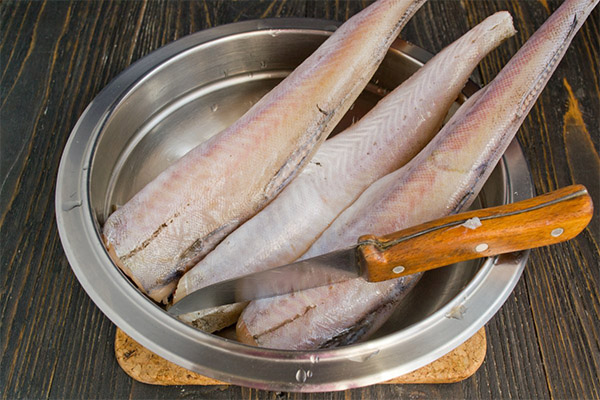
However, there are nuances here as well. Integrity of the frozen fish carcass depends on the species of the reservoir inhabitant. For example, delicate trout meat will suffer more, but rough and tough one, like pollock, will suffer less. And re-frozen pollock becomes even tougher, rougher and very similar in texture to rubber. However, if you plan to make fish cutlets and mince the flesh in a meat grinder, it does not matter whether the fish is frozen once or twice.
In addition, during thawing, the surface of the carcass has already born the life of various microorganisms, which probably began their evil work of spoiling the product. That is, re-frozen fish can simply be harmful or even dangerous to health.
What to do with leftover and unclaimed fish? You can boil it, separate it from the bones and cut into small pieces. Separately, in a frying pan with vegetable oil stew the onion, carrot and tomato, adding salt and spices to the vegetables. Put the fish in a salad bowl, put the stewed vegetables on top, cool it and put it in the fridge till morning. The next day will be a wonderful cold dish - fish under marinade, which is good on its own, and as a snack.
Or you can separate the flesh from the bones, mince it through a meat grinder, add onions and garlic. And this minced meat is quite realistic to put in the freezer. But it is better to salt it, add an egg and spices, form patties, putting a small piece of butter inside each one. Roll the cutlets in breadcrumbs (in their absence ordinary flour will do) and fry until crispy on both sides. Ready for a hearty breakfast! In the morning the only thing left is to reheat (and there are fans of cold fish cutlets). These cutlets are much healthier than the traditional morning sandwich with sausage. In the extreme case, you can put ready-made cutlets in the freezer, and they will quite calmly wait for their time.
But the best way to avoid the hassle of having to urgently process the surplus is to assess more carefully and accurately the need for the product for lunch or dinner and defrost exactly the amount of fish you need.
How long does it take to defrost fish
So, the hostess has decided that she will cook fried fish for dinner. And since she knows that the most correct way to defrost is slow, when she goes to work, she will take the carcass out of the freezer and put it on the bottom shelf of the refrigerator. By the evening when she returns home, the fish will be ready for further cooking.
It takes 7 to 9-10 hours to defrost the fish that weighs about a kilogram in this way, while a two-kilogram fish can take much longer - almost a day! But even if the fish carcass is not thawed completely, it does not matter: this fact does not prevent you from cleaning the product, and it is even more convenient to process some kinds of frozen fish.
Expecting guests and wishing to surprise them with a delicious dish, you can defrost the fish only slowly - in the refrigerator. All other ways worsen its structure, appearance, color and taste, and even the greatest culinary talent will not save the reputation of the hostess who prepared the dish from a quickly defrosted fish carcass.
You can leave the fish to defrost simply in the air. It is important that it is in a plastic bag, which will keep its surface from drying out. If the kitchen is 20-22 degrees, it takes about six hours to thaw the carcass, and the steak - even faster, about four hours. But such defrosting is dangerous: in the heat in the fish meat quickly reproduces microorganisms, it begins to spoil and even rotten.
Defrosting fish in a bowl with cold water, where it is placed in several plastic bags, can go faster - up to three hours. Sometimes right in the bags and water it is sent to the refrigerator. This option is possible, but somewhat pointless: the defrosting time remains the same as when the carcass is simply put in the refrigerator, without water. In addition, you should not forget that the water in the basin must be changed several times during the defrosting session.
Even more quickly - in an hour and a half - you can defrost the fish under a stream of cold running water. An hour and a half will be enough for this, but this method is suitable only for those who are not used to counting the water consumption.
It takes up to two hours to defrost a medium-sized fish carcass in a salt solution. But it is recommended to use this method only for the preparation of marine fish, the body of which is saturated with its own salts and will not particularly react to the fact that the salt solution draws liquid from the fish meat, making it dry and stiff. For freshwater fish salt water is destructive. But it is quite acceptable for fatty fish that is supposed to be pickled, stewed, fried, smoked or baked.
Only whole fish can be defrosted in salt water, this method is not suitable for steaks and cuttings.
It is equally acceptable to keep fish in this solution as simply on the kitchen table, where the process will go quickly, and to remove it to the refrigerator, where defrosting is somewhat delayed and may well take four hours instead of two.
With even faster defrosting methods, it is possible to defrost fish in as little as 40 minutes. A hair dryer with a stream of cold air can do this. Multicooker, steamer, oven or water bath can perform this task in 15-20 minutes. But here it is important not to overpreserve the carcass and not to defrost for a longer time, otherwise the fish will be too soft, loose, will begin to fall apart - to the point that it will be impossible to cut it with a knife, since the flesh will just crumple. And it will have almost no useful substances.
How long does a defrosted fish keep in the refrigerator?
Defrosted fish that has been lying on the refrigerator shelf for a certain time is not the best product for the table. It is better to create with it culinary masterpieces immediately after thawing. But since in life there are force majeure situations, it also happens that the planned cooking of fish for dinner must be postponed. However, postponing more than two hours is highly undesirable. The fish will not taste good, and the meat will lose its shape and become loose.
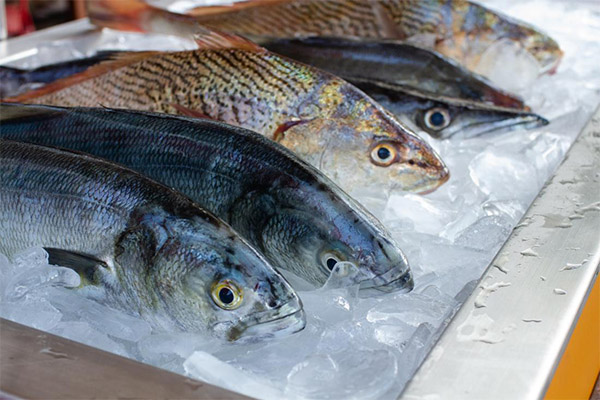
In this case, before you put the carcass in the refrigerator for temporary storage, you need to put it in a container of food plastic or glass and close tightly with a lid. If all containers are taken - wrap it in a wet cotton cloth.
Moreover, fillets are not to be stored at all - even for a short time. Prepare a dish of it immediately after defrosting.
How not to defrost fish
To ensure that the fish does not lose its flavor, does not fade in appearance and is not harmful to health, you should never defrost in hot or warm water. And cold water will not be useful if the fish is put in it without the bag, just the carcass. The liquid will draw a number of vitamins and minerals from the fish flesh, which means the product will lose much of its nutritional value.
In addition, putting the carcass or steak to thaw in the air, you must always cover them and not defrost completely (until too soft). It is better to let them be a little frosty inside when the hostess begins to cook any dish with it. This applies, in the first place, to fillets.
Stuffing or fish semi-finished products - such as cutlets or meatballs - should not be thawed in a water bath, so they will become shapeless and tasteless, losing their juice and flavor. For them, it is best to thaw in the refrigerator, on the bottom shelf.
«Important: All information on this site is provided for informational purposes only purposes only. Before using any recommendations, consult a health care professional. specialist before using any of the recommendations. Neither the editors nor the authors shall be liable for any possible harm caused by materials."


